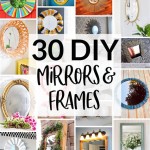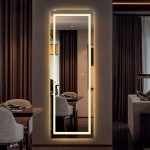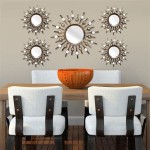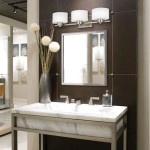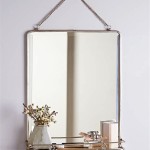How To Glue Mirror to Wood: A Comprehensive Guide
Attaching a mirror to a wooden surface can enhance the aesthetic appeal of furniture, create decorative wall pieces, or serve functional purposes like creating dressing tables or vanity mirrors. A successful bond requires careful preparation, selection of the appropriate adhesive, and the use of proper application techniques. This article provides a detailed guide on how to glue a mirror to wood, ensuring a secure and long-lasting connection.
Choosing the Right Adhesive
The selection of an appropriate adhesive is paramount to the success of any mirror-to-wood adhesion project. Not all adhesives are created equal; some may damage the mirror's backing, fail to provide adequate bonding strength, or degrade over time, leading to detachment. Several adhesive types are commonly employed, each with its own advantages and disadvantages.
Mirror Mastic: This is a specialized adhesive specifically formulated for bonding mirrors to various surfaces, including wood. Mirror mastic is designed to be non-corrosive and compatible with the reflective backing of mirrors, preventing discoloration or damage. It provides a strong, permanent bond and is generally considered the best option for this type of application. When selecting mirror mastic, ensure it is explicitly labelled as mirror adhesive and compliant with relevant industry standards.
Construction Adhesive: Certain construction adhesives, particularly those formulated for general construction purposes, can be used if they are confirmed to be mirror-safe. It is crucial to verify the adhesive's compatibility with mirrors by reviewing the manufacturer's specifications and product information. Look for adhesives that are solvent-free, neutral-cure, and do not contain compounds that could react with the mirror's backing. Consider the adhesive's open time (the duration it remains workable) and its curing time (the time needed to achieve full strength) to plan accordingly.
Silicone Sealant: Some silicone sealants can also be employed, but only those that are specifically designated as mirror-safe. Acid-cure silicone sealants should be strictly avoided, as they can corrode the silver backing of the mirror. Opt for neutral-cure silicone sealants that are formulated for bonding mirrors and glass. Ensure the selected silicone sealant offers sufficient adhesion to wood and is compatible with the environmental conditions to which the bonded assembly will be exposed (e.g., humidity, temperature fluctuations).
Double-Sided Adhesive Tape: While less common for permanent mirror-to-wood bonding, heavy-duty, double-sided adhesive tape can provide temporary support while the primary adhesive cures. Certain types of double-sided tape are designed for bonding mirrors, but their long-term reliability as a sole adhesive is often questionable, especially for larger or heavier mirrors. If using tape, select a high-performance, acrylic-based tape designed for bonding to non-porous surfaces. It can be used in conjunction with mirror mastic for added initial hold and to maintain position. Remove the tape once the mirror mastic is sufficiently cured.
Surface Preparation
Proper surface preparation is essential for achieving a strong and durable bond between the mirror and the wood. The surfaces must be clean, dry, and free of any contaminants that could interfere with the adhesive's ability to bond effectively. Neglecting proper preparation can result in weak adhesion, premature failure, and potential damage to the mirror or the wooden substrate.
Cleaning the Mirror: The back surface of the mirror should be thoroughly cleaned to remove any dust, dirt, fingerprints, or residue. Use a lint-free cloth dampened with isopropyl alcohol or a specialized glass cleaner to wipe the back of the mirror. Avoid using harsh chemicals or abrasive cleaners that could damage the reflective coating. Ensure the surface is completely dry before applying any adhesive. If a protective film is present on the back of the mirror, remove it prior to cleaning.
Preparing the Wood Surface: The wooden surface must also be properly prepared to ensure optimal adhesion. If the wood is unfinished, lightly sand the surface to create a slightly textured profile that will enhance the mechanical bond with the adhesive. Remove any loose fibers or sanding dust with a tack cloth or a clean, dry brush. If the wood is painted or varnished, ensure the finish is sound and securely bonded to the wood. Loose or flaking paint should be removed by sanding or scraping. Clean the wood surface with a suitable cleaner to remove any grease, wax, or other contaminants. Allow the surface to dry completely before proceeding.
Priming the Wood (Optional): In some cases, applying a primer to the wooden surface can improve adhesion, especially if the wood is porous or has a challenging surface. Select a primer that is compatible with the chosen adhesive and the wood species. Follow the manufacturer's instructions for application and drying time. Priming can also help to seal the wood, preventing moisture absorption that could weaken the adhesive bond over time.
Test Adhesion (Recommended): Before applying adhesive to the entire mirror and wood surface, it is advisable to perform a test adhesion in an inconspicuous area. Apply a small amount of adhesive to a small section of the mirror and wood, and allow it to cure according to the manufacturer's instructions. Then, attempt to separate the bonded pieces to assess the strength of the bond. This test can help identify potential compatibility issues or surface preparation deficiencies before committing to the full-scale bonding process.
Application Technique
The application technique plays a crucial role in ensuring a strong and uniform bond between the mirror and the wood. Applying the adhesive correctly, providing adequate support during curing, and avoiding air pockets or voids are all essential factors for success.
Applying the Adhesive: Apply the selected adhesive to the back of the mirror in a consistent and even pattern. For larger mirrors, use a continuous bead of adhesive around the perimeter of the mirror, approximately 1-2 inches from the edge. Then, apply additional beads of adhesive in a grid pattern across the central area of the mirror, spacing the beads several inches apart. This ensures uniform coverage and helps to distribute the stress evenly across the bonded area. Avoid applying excessive amounts of adhesive, as this can create squeeze-out and weaken the bond. For smaller mirrors, a few well-placed beads or dabs of adhesive may be sufficient.
Positioning the Mirror: Carefully position the mirror onto the prepared wooden surface, aligning it precisely as desired. Once the mirror is in place, apply gentle pressure to ensure good contact between the adhesive and both surfaces. Avoid sliding the mirror around, as this can create air pockets or smear the adhesive. If necessary, use shims or spacers to ensure proper alignment and leveling.
Providing Support During Curing: During the curing process, it is essential to provide adequate support to the mirror to prevent it from shifting or sagging. Use clamps, wedges, or props to hold the mirror firmly in place while the adhesive cures. The type and amount of support required will depend on the size and weight of the mirror, as well as the orientation of the bonded assembly. Consult the adhesive manufacturer's instructions for recommended curing times and support requirements.
Cleaning Up Excess Adhesive: Promptly clean up any excess adhesive that squeezes out from the edges of the mirror. Use a damp cloth or a solvent recommended by the adhesive manufacturer to remove the excess adhesive before it cures. Be careful not to smear the adhesive onto the mirror's surface or damage the surrounding wood finish. Once the adhesive has fully cured, any remaining residue can be carefully removed with a sharp blade or a specialized adhesive remover.
Allowing Adequate Curing Time: Allow the adhesive to cure fully according to the manufacturer's instructions. Prematurely removing the support or stressing the bond before the adhesive is fully cured can compromise the integrity of the adhesion. The curing time can vary depending on the type of adhesive, the temperature, and the humidity. Consult the adhesive manufacturer's specifications for recommended curing times and environmental conditions.
By carefully selecting the appropriate adhesive, thoroughly preparing the surfaces, and employing proper application techniques, a secure and long-lasting bond between a mirror and wood can be achieved. Adhering to manufacturer guidelines and prioritizing thoroughness will contribute to a professional and reliable outcome.

How To Glue A Heavy Mirror The Wall Mom Blog Society

How To Glue A Mirror Wood Fast Effective Start Woodworking Now In 2024 Tape Reading

Diy Farmhouse Mirror Made From Shims House Of Hepworths

How To Glue Wood A Mirror Surface Hunker

Mirror Frame Diy How To Update A Basic Bathroom Our Faux Farmhouse

Easy Driftwood Mirror The Wood Grain Cottage

Diy Farmhouse Wood Frame Mirror She Gave It A Go

4 Easy Steps To Glue Mirror Wood

Diy Bathroom Mirror Frame For Under 10 O Hayley Blog

Mirror Frame Diy How To Update A Basic Bathroom Our Faux Farmhouse

